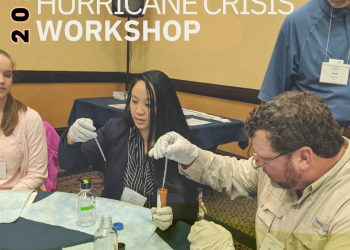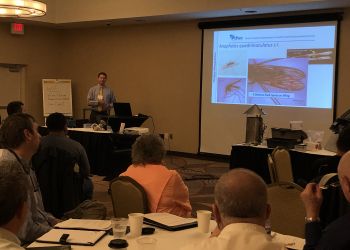The U.S. Food & Drug Administration’s (FDA’s) Voluntary National Retail Food Regulatory Program Standards (Retail Program Standards) are designed to help food regulatory programs enhance the services they provide to the public.
Since August, NACCHO has been showcasing the progress that communities across the country have made in retail food protection through the Retail Program Standards blog series.
This month, we are taking a break from our regular schedule of focusing on one Standard per month to celebrate a jurisdiction that recently met all nine of the Standards.
 In September, Gwinnett, Newton and Rockdale (GNR) County Health Departments in Georgia joined the four other jurisdictions nationwide to accomplish this feat – Kansas City Missouri Health Department (Missouri), City of Vineland Health Department (New Jersey), Portsmouth Health Department (Virginia), and Virginia Beach Department of Public Health (Virginia).
In September, Gwinnett, Newton and Rockdale (GNR) County Health Departments in Georgia joined the four other jurisdictions nationwide to accomplish this feat – Kansas City Missouri Health Department (Missouri), City of Vineland Health Department (New Jersey), Portsmouth Health Department (Virginia), and Virginia Beach Department of Public Health (Virginia).
Jason Reagan, district environmental health director for GNR County Health Departments, explains how he and his team accomplished this goal and describes the impact the Standards have had on their community:
How did you find out you officially met all nine of the Retail Program Standards? What was your reaction?
Chris Smith, our FDA Retail Food Specialist, notified us that we had met all nine Standards. We were very excited to hear that news! It had been a long time coming with a lot of blood, sweat, and tears on the way to crossing the finish line. We’ve known we’re a great environmental health department, but now we can back it up since we’ve met all nine Standards.
Tell us about your experience in NACCHO’s Mentorship Program. How did your time as a mentor and mentee lead to your success with the Standards?
We have participated as a mentee and mentor in the NACCHO Mentorship Program. Our participation was key in meeting all nine Standards. As a mentee, the program allowed us to be mentored by another jurisdiction that had met the Standard we were working on at that time. As a mentor, we were able to pass along valuable information and help our mentee meet the Standard they were working on at the time. The mentorship program as a whole, for both mentors and mentees, brought jurisdictions from across the nation together to work on the Standards and share experiences with one another. All participants shared one goal: to better their food safety program and operate their department at a gold quality standard. To this day, we stay in contact with other jurisdictions that we met along the way on this journey. Our professional friendships were forged through this mutual quest for excellence.
How has your work on the Retail Program Standards affected your community in terms of public health outcomes?
Our work on the Standards has affected our community in several ways. Our staff has become better trained in their inspection techniques and food safety knowledge due to Standard 2; we educate the community and industry through Standard 7 by participating in the Georgia Food Safety Task Force; and with Standard 9 we have identified some of the top food safety violations among the facilities we regulate, which helps us develop and distribute training materials to help facilities better understand the food code and how to handle their food safely.
Which Standard(s) has had the biggest impact on your health department and/or community?
While it is hard to pick just one, I think Standard 2 has helped us the most internally. Standard 2 deals with training new and existing staff, and we are now more consistent across the board when conducting inspections. We have a training notebook for new hires that travels with them throughout their training process. The notebook ensures that our department is training our staff in the same manner each time and covering all the necessary topics at hand. For existing staff, Standard 2 helps us keep track of staff CEUs to make sure they have the minimum required for standardization and re-standardization.
What tips do you have for other jurisdictions enrolled in the Retail Program Standards?
Don’t give up. Write out a timeline with goals of when and how you will work on the Standards. Our goal was to accomplish one Standard per year. Remember, this is a marathon and not a sprint. Also, you need to designate someone or a group of people in your department to spearhead work on the Standards because if not, you will never meet them. Celebrate each milestone you meet along the way. Keep your eyes on the prize. Know that in the end, all of your hard work will pay off. Your department will be a fine-tuned food safety machine!
Stay tuned for the next post, which will focus on Standard 3: Inspection Program Based on HACCP Principles, coming in December.
Contact Amy Chang at [email protected] with any questions.






